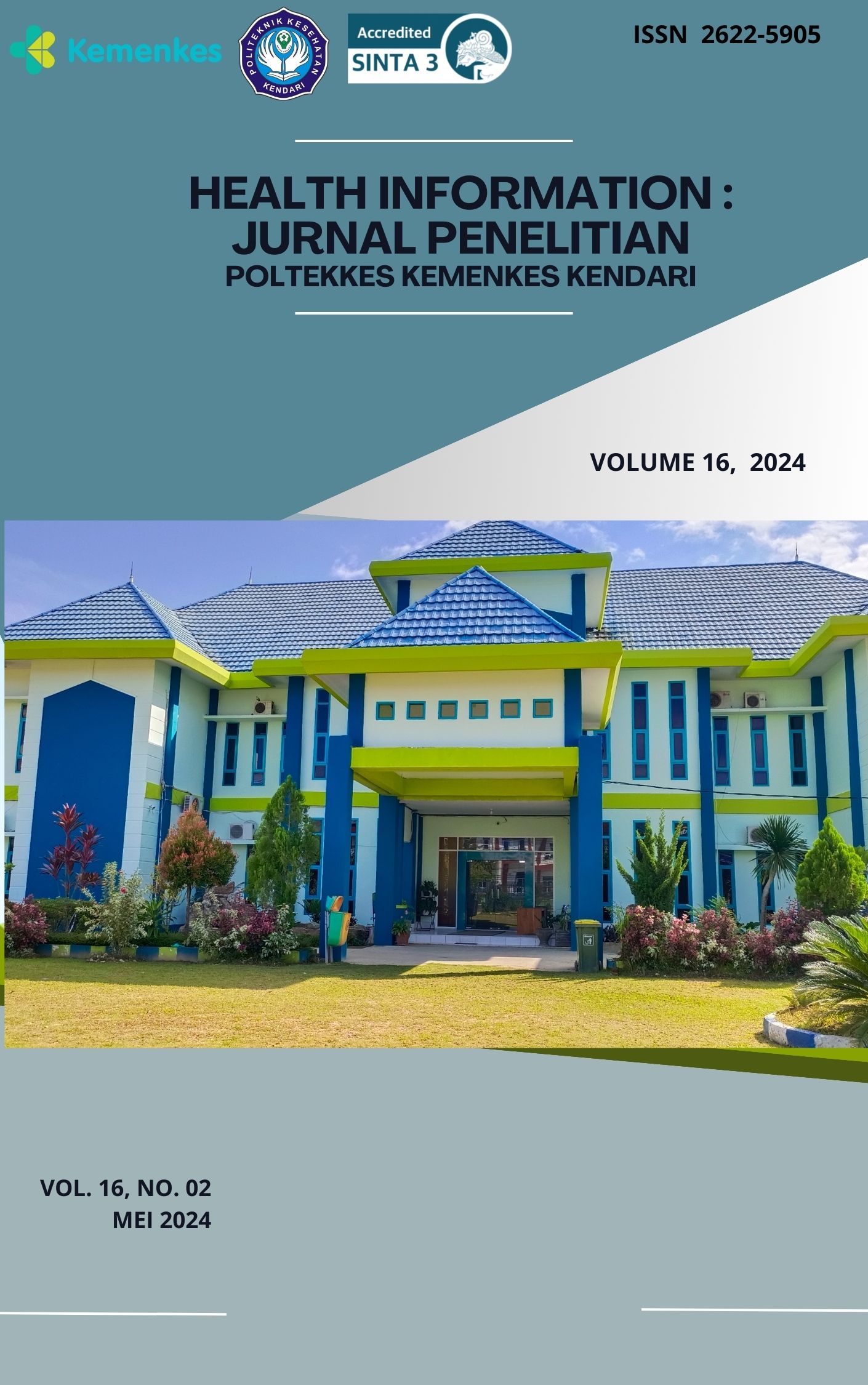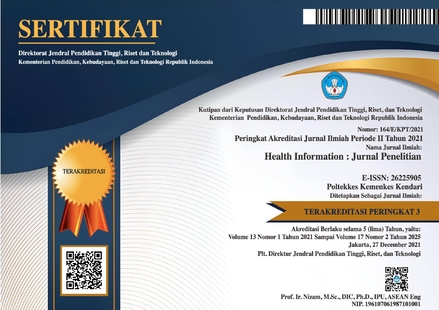The Influence of Mental Workload and Work Motivation on Work Fatigue in Workers at PKS PTPN IV Bah Jambi
DOI:
https://doi.org/10.36990/hijp.v16i2.1514Keywords:
Mental Workload, Work Fatigue, Work MotivationAbstract
Workload is not limited to workers' physical tasks, but cognitive and mental tasks also play an important role in creating their workload. This research is to explore mental workload, motivation, and its influence on worker fatigue among workers at the PTPN IV Bah Jambi Palm Oil Mill. This research uses a quantitative research approach using a cross sectional method, so what is used is a questionnaire. The questionnaire used is a Likert model scale. The population of this study was 68 workers in the processing section at the PTPN IV Bah Jambi Palm Oil Factory. With a sampling technique using total sampling, the number of respondents in this study was 68 people. The data analysis used was univariate and bivariate analysis using the chi-square test. The research show that there is a relationship between mental workload and work fatigue with the chi square statistical test results obtained at p = 0.001 (? ? 0.05). Apart from that, the research results show that there is a relationship between work motivation and work fatigue. The chi square statistical test results obtained p = 0.003 (? ? 0.05). The conclusion that can be drawn from this research based on the results obtained is that there is a relationship between mental work load and work fatigue, and there is a relationship between work motivation and work fatigue in processing workers at the PTPN IV Bah Jambi Palm Oil Factory.
References
Afriansyah, P., Kesehatan, S., & Indonesia, M. (2022). MENTALLY WORK ASSESSMENT AND EXHAUSTION WORK COMPLAINT IN. January, 166–176. https://doi.org/10.20473/ijosh.v6i2.2017.166-176.
DeArmond, S., Matthews, R. A., & Bunk, J. (2022). Workload and procrastination: The roles of psychological detachment and fatigue. In International Journal of Stress Management (Vol. 21, Issue 2, pp. 137–161). Educational Publishing Foundation. https://doi.org/10.1037/a0034893
Eka Rini, W. N., Aswin, B., & Hidayati, F. (2021). Analisis Risiko dan Determinan Kejadian Kecelakaan Kerja di Pabrik Minyak Kelapa Sawit. Jurnal Riset Hesti Medan Akper Kesdam I/BB Medan, 6(2), 162. https://doi.org/10.34008/jurhesti.v6i2.248
Fan, J., & Smith, A. P. (2023). The impact of workload and fatigue on performance. Communications in Computer and Information Science, 726(September), 90–105. https://doi.org/10.1007/978-3-319-61061-0_6
Govaerts, R., De Bock, S., Provyn, S., Vanderborght, B., Roelands, B., Meeusen, R., & De Pauw, K. (2023). The impact of an active and passive industrial back exoskeleton on functional performance. Ergonomics, 110(June 2022). https://doi.org/10.1080/00140139.2023.2236817
Jalali, M., Esmaeili, R., Habibi, E., Alizadeh, M., & Karimi, A. (2023). Mental workload profile and its relationship with presenteeism, absenteeism and job performance among surgeons: The mediating role of occupational fatigue. Heliyon, 9(9). https://doi.org/10.1016/j.heliyon.2023.e19258
Jeffri, N. F. S., & Awang Rambli, D. R. (2021). A review of augmented reality systems and their effects on mental workload and task performance. Heliyon, 7(3). https://doi.org/10.1016/j.heliyon.2021.e06277
Landowska, A., Wilson, M. L., Craven, M. P., & Harrington, K. (2024). Adaptative computerized cognitive training decreases mental workload during working memory precision task - A preliminary fNIRS study. International Journal of Human Computer Studies, 184(December 2023). https://doi.org/10.1016/j.ijhcs.2023.103206
Mohammadian, M., Parsaei, H., Mokarami, H., & Kazemi, R. (2022). Cognitive demands and mental workload: A filed study of the mining control room operators. Heliyon, 8(2). https://doi.org/10.1016/j.heliyon.2022.e08860
Nathasya, R. P., Suci, W. P., & Amir, Y. (2023). Analisis Beban Kerja Di Ruang Rawat Inap Surgical RSUD Arifin Achmad Pekanbaru. Health Information : Jurnal Penelitian, 15(2), e978. Retrieved from https://myjurnal.poltekkes-kdi.ac.id/index.php/hijp/article/view/978
Oktaviola, S., Widiarini, R., & Marsanti, A. S. (2023). Pengaruh Beban Kerja Terhadap Kualitas Pelayanan Perawat Di Ruang Rawat Inap Rumah Sakit Islam Siti Aisyah Kota Madiun. Health Information : Jurnal Penelitian, 15(2), e1003. Retrieved from https://myjurnal.poltekkes-kdi.ac.id/index.php/hijp/article/view/1003
Okumus, D., Fariya, S., Tamer, S., Gunbeyaz, S. A., Yildiz, G., Kurt, R. E., & Barlas, B. (2023). The impact of fatigue on shipyard welding workers’ occupational health and safety and performance. Ocean Engineering, 285(July). https://doi.org/10.1016/j.oceaneng.2023.115296
Rini, S., Iqra, S., & Iqra, S. (2020). Kombinasi Relaksasi Otot Progresif dan Latihan Autogenik terhadap Kecemasan Keluarga Pasien yang Menjalani Perawatan Intensif?: Penelitian Kuasi Eksperimen dengan Kelompok Terkontrol Combination of Progressive Muscle Relaxation and Autogenic Exercise on F. 66–75.
Sari, R. P., Susanto, B. N. A., & Komalasari, E. (2021). The correlation between work shift and level of fatigue among workers. Enfermeria Clinica, 31, S450–S453. https://doi.org/10.1016/j.enfcli.2020.09.043
Stanyte, A., Fineberg, N. A., Podlipskyte, A., Gecaite-stonciene, J., & Burkauskas, J. (2024). Jo ur na l P re r f.
Tahir, R., Sartiya Rini, D., Muhsinah, S., & Iqra S, I. S. (2022). Combination of Progressive Muscle Relaxation and Autogenic Exercise on Family Anxiety of Patients undergoing Intensive Care: a Quasi-Experimental Study with a Controlled Group. Health Information : Jurnal Penelitian, 14(1), 66–75. https://doi.org/10.36990/hijp.v14i1.481 (Original work published June 28, 2022)
Umer, W., Yu, Y., Fordjour Antwi Afari, M., Anwer, S., & Jamal, A. (2023). Towards automated physical fatigue monitoring and prediction among construction workers using physiological signals: An on-site study. Safety Science, 166(January). https://doi.org/10.1016/j.ssci.2023.106242
Downloads
Published
How to Cite
Issue
Section
Citation Check
License
Copyright (c) 2024 Monica Amelia Dias, Zata Ismah, Syafran Arrazy (Author)

This work is licensed under a Creative Commons Attribution-ShareAlike 4.0 International License.
Authors retain copyright and grant the journal right of first publication with the work simultaneously licensed under a Creative Commons Attribution-ShareAlike 4.0 International License that allows others to share the work with an acknowledgment of the works authorship and initial publication in this journal and able to enter into separate, additional contractual arrangements for the non-exclusive distribution of the journals published version of the work (e.g., post it to an institutional repository or publish it in a book).
















